What are the 9 planets in order? The solar system is a fascinating cosmic dance where planets orbit the Sun in a specific order. Whether you’re a seasoned astronomer or just curious about our celestial neighborhood, knowing the planets in order is essential. In this article, we’ll explore the 9 planets in order, taking you on a journey from the scorching surface of Mercury to the icy depths of Pluto. Along the way, we’ll discover each planet’s unique characteristics and uncover what makes them so special in our solar system’s grand symphony.
When we gaze up at the night sky, we often marvel at the stars, but do you ever wonder about the planets that share our solar system? These celestial bodies have intrigued humans for millennia, each with its own mysteries and wonders. In this article, we’re embarking on a cosmic journey to explore the nine planets of our solar system in order, unraveling the secrets that make each one unique. So buckle up as we journey from Mercury’s scorching surface to Pluto’s icy frontier.
1. Mercury: The Swift Messenger
Our journey begins with Mercury, the closest planet to the Sun and the swift messenger of the solar system.
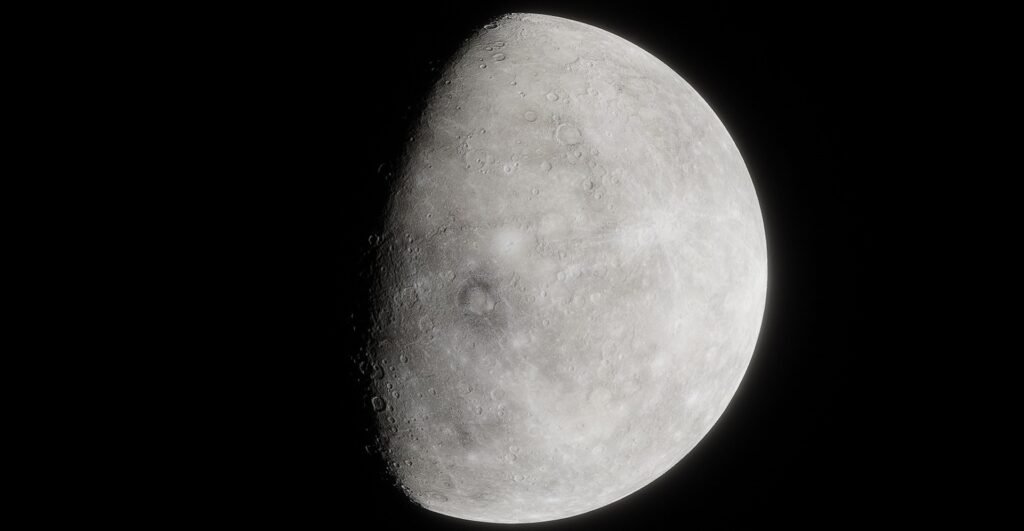
Closest Planet to the Sun
Mercury orbits the Sun at an average distance of about 36 million miles (58 million kilometers). Its proximity to the Sun means it has the shortest orbital period, completing a trip around the Sun in just 88 Earth days. This swift motion is why it’s named after the Roman messenger god.
Unique Characteristics of Mercury
Mercury is a rocky planet with a surface marked by craters, much like our Moon. Its lack of a significant atmosphere means it cannot retain heat, leading to extreme temperature fluctuations. During the day, temperatures soar to around 800°F (427°C), while at night, they plummet to -290°F (-180°C).
Why is Mercury’s Surface So Hot?
Mercury’s surface temperature is a result of its close proximity to the Sun and lack of an atmosphere to distribute heat. Without a protective layer, the Sun’s rays directly scorch the surface, making it one of the hottest planets in the solar system during the day.
2. Venus: Earth’s Twin with a Fiery Twist
Next in line is Venus, often referred to as Earth’s twin due to its similar size and composition, but with a fiery twist.
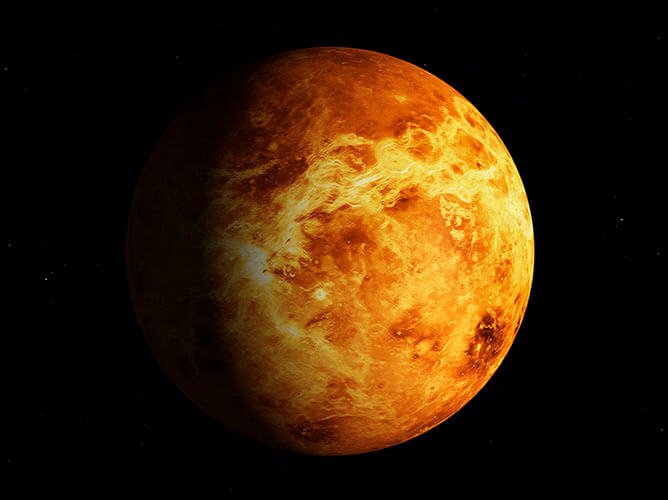
Second Planet from the Sun
Venus orbits the Sun at an average distance of about 67 million miles (108 million kilometers). Its bright appearance makes it the third-brightest object in our sky after the Sun and Moon, often visible to the naked eye as the “Evening Star” or “Morning Star.”
Venus’s Thick Atmosphere
Venus is shrouded in a thick atmosphere composed primarily of carbon dioxide, with clouds of sulfuric acid. This dense atmosphere traps heat, creating a runaway greenhouse effect that results in surface temperatures around 900°F (475°C), hotter than Mercury despite being further from the Sun.
The Mysteries of Venus’s Surface
Beneath its thick cloud cover, Venus boasts a rocky landscape of vast plains, towering volcanoes, and deep canyons. Recent missions have unveiled its surface, revealing a world shaped by intense volcanic activity and tectonic movements.
3. Earth: Our Blue Marble
Ah, Earth, the third planet from the Sun and our very own blue marble in space.

Third Planet from the Sun
Earth orbits the Sun at an average distance of about 93 million miles (150 million kilometers), a sweet spot known as the “Goldilocks Zone” where conditions are just right for life.
Unique Features of Earth
What makes Earth so special? It’s the only known planet to harbor life, thanks to its breathable atmosphere, abundant water, and diverse ecosystems. From lush forests to arid deserts, Earth boasts a stunning array of landscapes and climates.
Why is Earth the Only Planet with Life?
Earth’s ability to support life is due to a combination of factors: its perfect distance from the Sun, a protective magnetic field, and a balanced atmosphere rich in oxygen and nitrogen. These elements create a stable environment where life can thrive.
4. Mars: The Red Planet
Continuing our journey, we arrive at Mars, the enigmatic Red Planet with a surface that tells stories of ancient water flows.
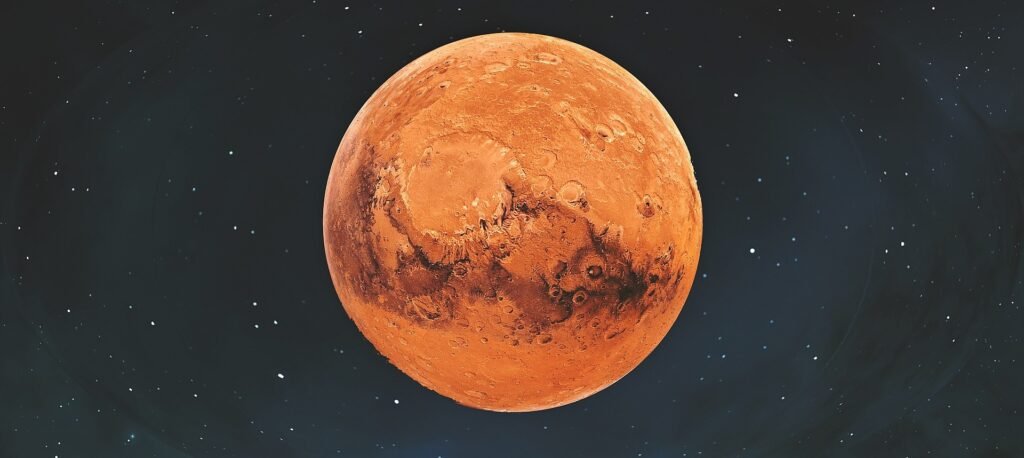
Fourth Planet from the Sun
Mars orbits the Sun at an average distance of about 142 million miles (228 million kilometers). Its reddish appearance, caused by iron oxide (rust) on its surface, has fascinated humans for centuries.
Mars’s Intriguing Features
Mars is home to the largest volcano in the solar system, Olympus Mons, and the deepest canyon, Valles Marineris. Recent discoveries have unveiled evidence of liquid water in the past, sparking interest in the possibility of life.
The Quest to Explore Mars
Mars has been a prime target for exploration, with numerous missions sent to study its surface and atmosphere. The ongoing quest to explore Mars aims to uncover its geological history and assess its potential for human colonization.
5. Jupiter: The King of Planets
Our journey now takes us to Jupiter, the mighty King of Planets with a magnetic presence in the solar system.
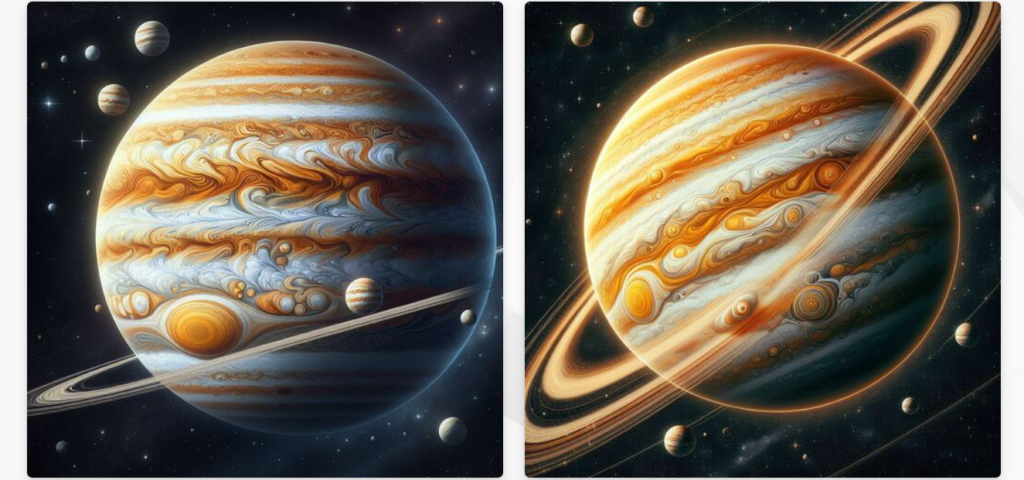
Fifth Planet from the Sun
Jupiter orbits the Sun at an average distance of about 484 million miles (778 million kilometers). As the largest planet in our solar system, it boasts a mass more than 300 times that of Earth.
Jupiter’s Massive Size
Jupiter is a gas giant composed mainly of hydrogen and helium. Its immense gravity and strong magnetic field influence the entire solar system, including its 79 known moons.
The Great Red Spot and Other Fascinating Features
One of Jupiter’s most iconic features is the Great Red Spot, a massive storm larger than Earth that has raged for centuries. The planet’s atmosphere is adorned with colorful bands and swirling clouds, making it a captivating subject of study.
6. Saturn: The Ringed Wonder
As we move further into the solar system, we encounter Saturn, the ringed wonder known for its breathtaking rings.
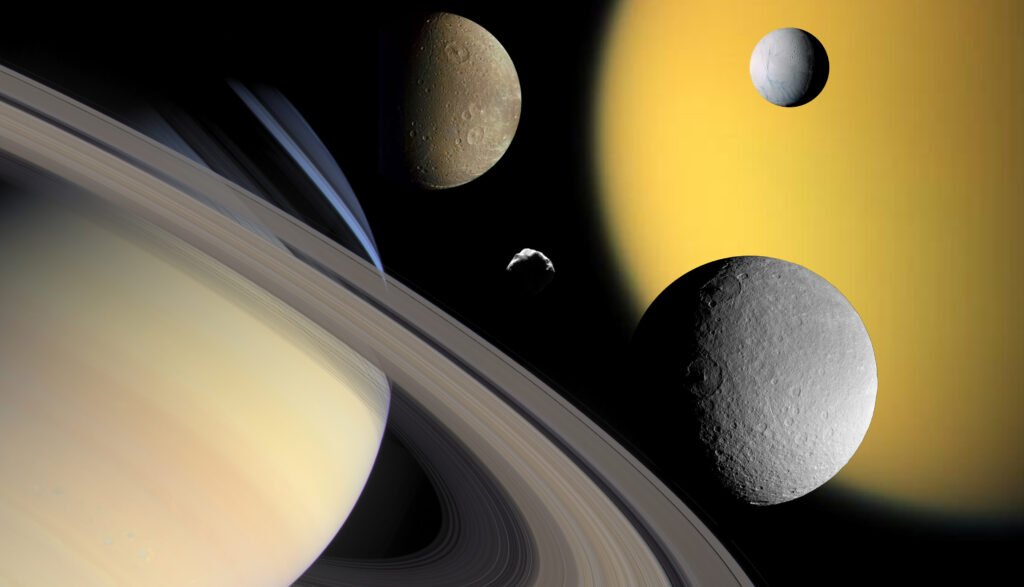
Sixth Planet from the Sun
Saturn orbits the Sun at an average distance of about 886 million miles (1.4 billion kilometers). Its distinct rings make it one of the most visually stunning planets in the solar system.
Saturn’s Iconic Rings
Saturn’s
rings are composed of ice and rock particles, varying in size from tiny grains to massive chunks. These rings are a result of gravitational interactions with its moons, creating a mesmerizing spectacle.
Exploration of Saturn and Its Moons
Saturn’s moons, including Titan and Enceladus, have sparked significant interest in planetary exploration. Titan, with its thick atmosphere and liquid methane lakes, and Enceladus, with its subsurface ocean, offer potential insights into extraterrestrial life.
7. Uranus: The Tilted Ice Giant
Journeying further, we arrive at Uranus, a tilted ice giant with a unique orientation.
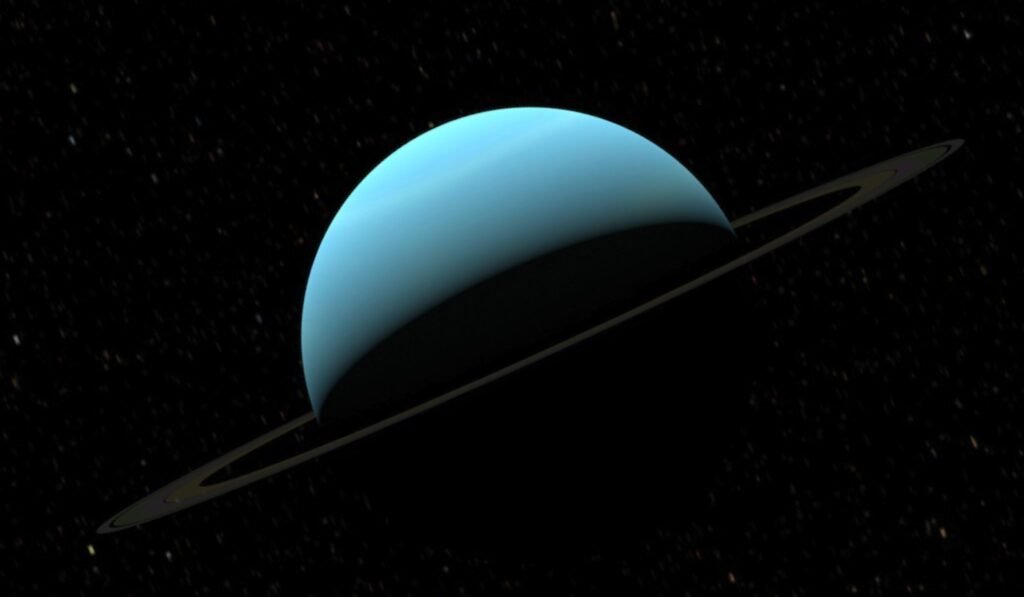
Seventh Planet from the Sun
Uranus orbits the Sun at an average distance of about 1.8 billion miles (2.9 billion kilometers). Its peculiar tilt of 98 degrees sets it apart from all other planets, resulting in extreme seasonal variations.
Uranus’s Unique Tilt and Composition
Uranus is composed mainly of hydrogen, helium, and methane, giving it a distinct blue-green hue. Its tilted axis creates unusual weather patterns and long seasons, making it a fascinating subject of study.
Why Uranus Stands Out in the Solar System
Uranus’s tilt and its faint rings make it a unique member of the solar system. Understanding its composition and behavior helps scientists gain insights into the formation of ice giants and the dynamics of planetary rotation.
8. Neptune: The Mysterious Blue Giant
Our journey nears its end as we visit Neptune, the mysterious blue giant shrouded in mystery.
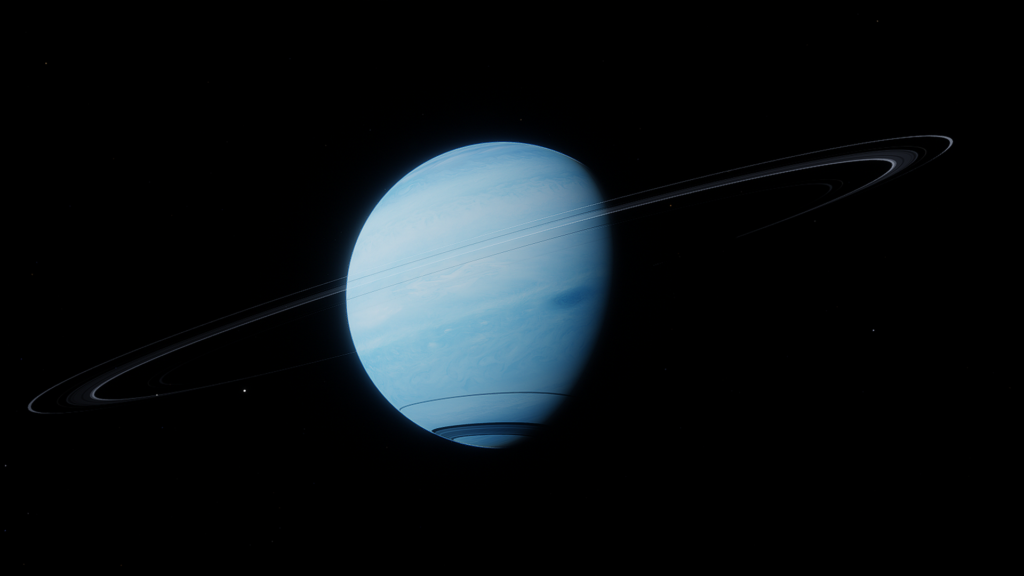
Eighth Planet from the Sun
Neptune orbits the Sun at an average distance of about 2.8 billion miles (4.5 billion kilometers). It’s the furthest known planet from the Sun and the last of the gas giants.
Neptune’s Dynamic Atmosphere
Neptune boasts a dynamic atmosphere with powerful winds reaching speeds of up to 1,200 miles per hour (2,000 kilometers per hour). Its deep blue color is due to the presence of methane, giving it an otherworldly appearance.
Neptune’s Intriguing Moons
Neptune’s moon Triton is of particular interest due to its retrograde orbit, suggesting it may have been captured from the Kuiper Belt. Triton’s icy surface and geysers hint at geological activity beneath its crust.
9. Pluto: The Dwarf Planet with a Big Heart
Finally, we reach Pluto, the dwarf planet with a big heart that once held the title of the ninth planet.

Ninth Planet in Historical Context
For decades, Pluto was considered the ninth planet until its reclassification as a dwarf planet in 2006. It orbits the Sun at an average distance of about 3.7 billion miles (5.9 billion kilometers).
Pluto’s Reclassification as a Dwarf Planet
Pluto’s reclassification by the International Astronomical Union (IAU) was based on its inability to clear its orbit of debris, a criterion for full planetary status. This decision sparked debates and discussions about what defines a planet.
What Makes Pluto Special?
Despite its reclassification, Pluto remains a fascinating world with a complex surface featuring mountains, valleys, and a heart-shaped glacier known as Tombaugh Regio. Its unique characteristics continue to captivate scientists and stargazers alike.
The Debate Over Pluto’s Status
Pluto’s status as a planet has been a topic of debate among astronomers and the public alike.
Why Pluto Was Reclassified
Pluto’s reclassification was based on the IAU’s new definition of a planet, which requires a celestial body to clear its orbit of debris. Pluto’s inability to meet this criterion led to its designation as a dwarf planet.
Arguments for and Against Pluto as a Planet
Proponents of Pluto’s planetary status argue that its unique characteristics and historical significance warrant its inclusion. Others contend that its size and inability to clear its orbit justify its reclassification as a dwarf planet.
What are the 9 planets in order? The Kuiper Belt and Beyond
Beyond Neptune lies the Kuiper Belt, a region filled with icy bodies and remnants from the solar system’s formation.
The Region Beyond Neptune
The Kuiper Belt is a vast region extending beyond Neptune, home to countless icy objects and dwarf planets. It’s a frontier of discovery that challenges our understanding of the solar system’s formation.
Discoveries in the Kuiper Belt
Recent discoveries in the Kuiper Belt have unveiled new dwarf planets, such as Eris and Haumea, reshaping our understanding of this distant region. These discoveries highlight the dynamic nature of our solar system.
The Search for Planet Nine
The search for a potential ninth planet, often referred to as Planet Nine or Planet X, continues to intrigue astronomers. Theoretical evidence suggests a massive planet may exist beyond Neptune, influencing the orbits of distant Kuiper Belt objects.
Remembering the Order of the Planets
Remembering the order of the planets can be a fun exercise, and mnemonics come to the rescue.
Mnemonics and Memory Aids
Mnemonics are helpful tools for memorizing the order of the planets. A classic example is: “My Very Educated Mother Just Served Us Nine Pizzas,” representing Mercury, Venus, Earth, Mars, Jupiter, Saturn, Uranus, Neptune, and Pluto.
Fun Ways to Remember the Planets
Creating personalized mnemonics or engaging in interactive activities can make learning the planets’ order an enjoyable experience. From songs to visual aids, there are countless ways to remember our celestial neighbors.
The Role of the Sun in the Solar System
The Sun plays a crucial role in shaping the solar system and influencing the planets.
How the Sun Influences the Planets
The Sun’s gravitational pull keeps the planets in their orbits, acting as the solar system’s anchor. Its immense energy provides light and heat, driving the climates and weather patterns of the planets.
The Sun’s Gravitational Pull
The Sun’s gravitational force extends far beyond the inner planets, reaching out to the Kuiper Belt and beyond. This influence ensures the stability and structure of our solar system, maintaining the delicate balance of celestial motions.
Conclusion
The solar system is a wondrous tapestry of planets, each with its own unique characteristics and mysteries. From the rocky landscapes of Mercury to the icy expanses of Pluto, these celestial bodies offer endless opportunities for exploration and discovery. Understanding the order of the planets not only enhances our knowledge of the cosmos but also deepens our appreciation for the intricate dance of celestial bodies that define our solar system.
FAQs
What are the 9 planets in order from the Sun?
The nine planets in order from the Sun are Mercury, Venus, Earth, Mars, Jupiter, Saturn, Uranus, Neptune, and Pluto (considered a dwarf planet).
Why is Pluto not considered a planet anymore?
Pluto was reclassified as a dwarf planet because it does not meet the International Astronomical Union’s criteria of clearing its orbit of debris, which is a requirement for full planetary status.
How many planets are there in the solar system?
There are eight recognized planets in the solar system, with Pluto classified as a dwarf planet.
What is the largest planet in the solar system?
Jupiter is the largest planet in the solar system, with a mass over 300 times that of Earth and a diameter of approximately 143,000 kilometers (89,000 miles).
Can we visit all the planets?
While current technology allows us to send spacecraft to study planets remotely, human exploration of all planets is not yet feasible due to the vast distances, harsh environments, and technological limitations involved.
